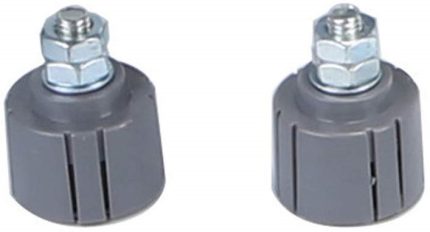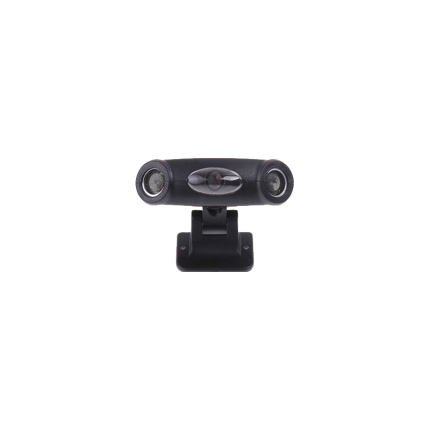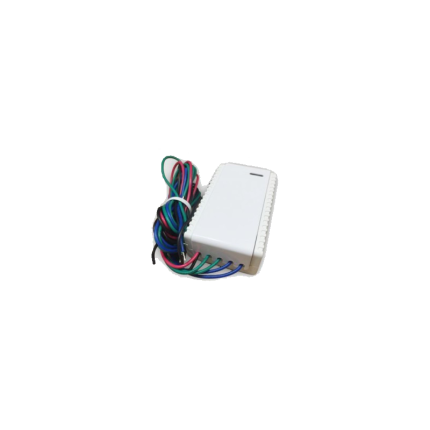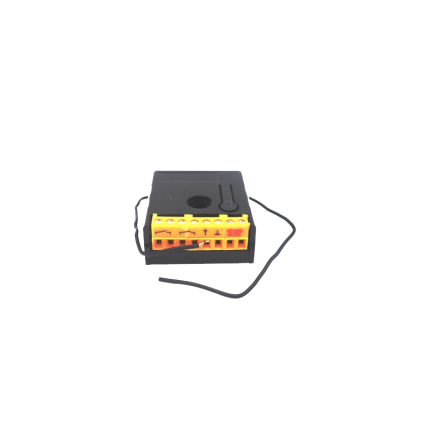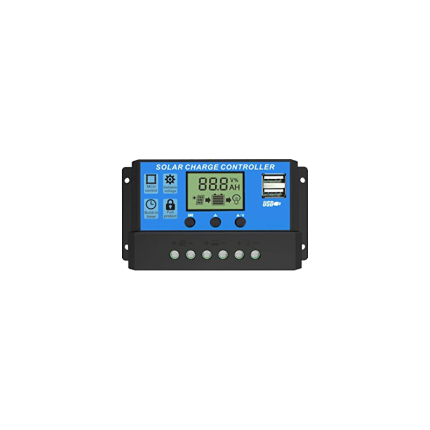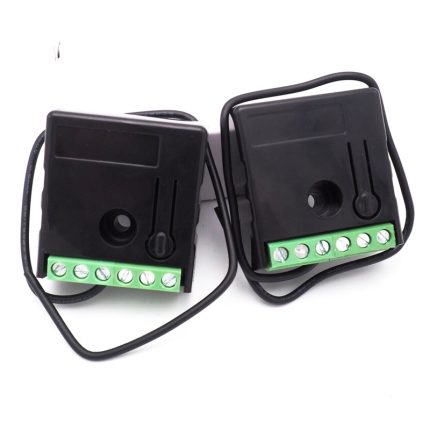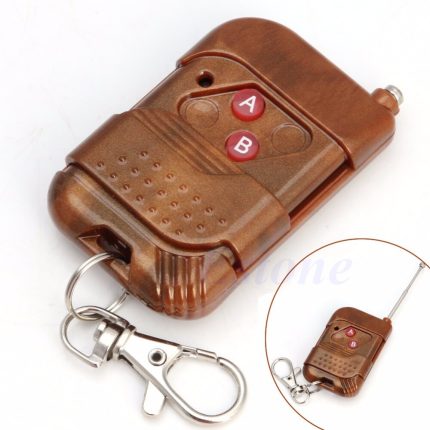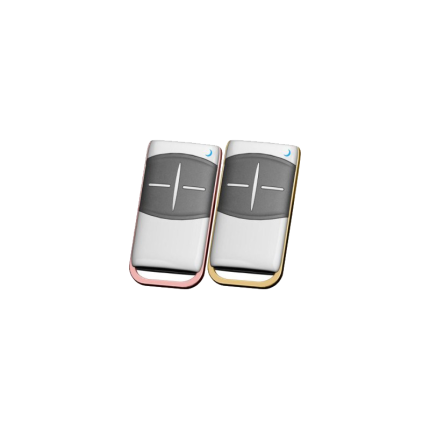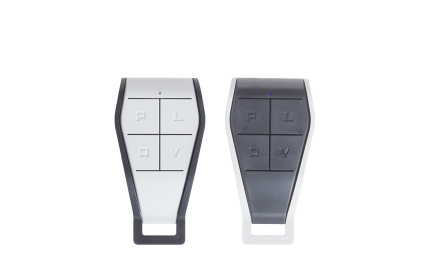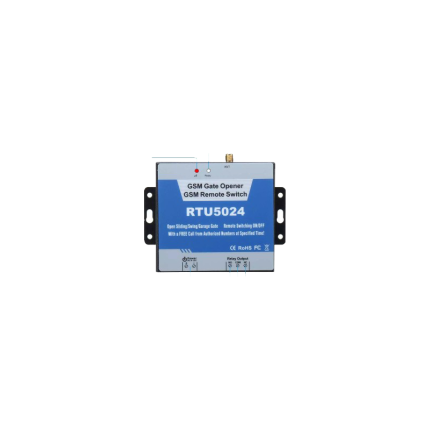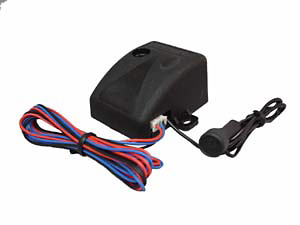Shop
Sliding gate operator limit sensor – Magnetic mechanism
Ship or pick up from our office.
Sliding gate operator limit sensor - Magnetic mechanism
A sliding gate operator limit sensor, often a limit switch, is a crucial component that signals the gate operator when the gate has reached its fully open or fully closed position, stopping the motor and preventing over-travel. These sensors ensure the gate stops at the correct positions, preventing damage to the gate and surrounding structure.
Here's a more detailed explanation:
-
Function:Limit sensors, like limit switches, detect when the gate reaches its extreme open or closed positions.
-
How it works:When the gate reaches the limit, the sensor sends a signal to the gate operator's control board, which then stops the motor.
-
Importance:Without limit sensors, the gate might continue to move, potentially hitting the end posts or other obstructions, causing damage.
-
Types:Common types include magnetic limit switches and photoelectric sensors (photo eyes).
-
Magnetic Limit Switches:These utilize magnets placed on the gate and a magnetic sensor on the operator. When the magnet aligns with the sensor, it triggers the limit switch.
-
Photoelectric Sensors (Photo Eyes):These use infrared beams to detect obstructions. When the beam is broken (e.g., by the gate), the sensor signals the operator to stop.
-
Installation:Proper installation and adjustment of limit sensors are crucial for the reliable operation.
-
Maintenance:Regular inspection and maintenance of limit sensors are recommended, as they can wear out or become misaligned over time.
Vehicle alarm ultrasonic sensor
Ship or pick up from our office.
Vehicle alarm ultrasonic sensor
A vehicle alarm ultrasonic sensor is a type of motion sensor used in car alarm systems to detect movement within the interior of a vehicle when the alarm is armed. It's designed to provide an extra layer of security by catching intruders who might try to gain access by breaking a window or otherwise entering the cabin without opening a door. Here's how it generally works:- Emission of Ultrasonic Waves: When the car alarm system is armed, the ultrasonic sensor (or typically a pair of sensors, one on each side of the front of the vehicle, often mounted on the A-pillars) emits high-frequency sound waves. These sound waves are beyond the range of human hearing, hence "ultrasonic." These waves fill the interior space of the vehicle.
- Monitoring for Echoes: The sensor continuously monitors the echoes of these sound waves as they bounce off the surfaces within the car's cabin (seats, dashboard, windows, roof, etc.). This creates a consistent pattern of reflected waves.
- Detection of Disturbance: If an intruder enters the vehicle, or if there's any significant movement within the cabin (e.g., someone reaches in through a broken window, or a pet is left inside and moves around), this movement disrupts the established pattern of the ultrasonic waves. The sound waves bounce back differently, indicating a change in the air pressure or the environment within the car.
- Alarm Trigger: When the sensor detects this disturbance or change in the reflected wave pattern, it signals the car's alarm system. The alarm then triggers, typically sounding the horn, flashing the lights, and in some cases, activating a dedicated siren.
- Interior Protection: Its primary purpose is to detect intrusion into the passenger compartment, complementing other sensors like door, hood, and trunk sensors.
- Invisible Barrier: It creates an "invisible" protective barrier within the vehicle's cabin.
- Sensitivity: Ultrasonic sensors are quite sensitive and can detect even minor movements, which makes them effective against various forms of unauthorized entry.
- False Alarm Reduction: Quality ultrasonic sensors are designed to minimize false alarms. However, factors like leaving windows open, a sunroof ajar, or having pets or large insects inside the car can sometimes trigger them.
- Compatibility: They are often integrated into factory-installed alarm systems in newer vehicles, but can also be added as aftermarket components to enhance existing security systems.
- Adjustable Sensitivity: Many systems allow for adjustment of the sensor's sensitivity to tailor its performance to different environments or situations.
- Not for Convertibles: Due to their reliance on enclosed air space and reflected sound waves, ultrasonic sensors are generally not suitable for convertibles or vehicles with soft tops, as the open or flexible roof would not properly reflect the sound waves, leading to false alarms or ineffective monitoring.
Radio receiver R5130
Ship or pick up from our office.
Radio receiver R5130
(Compatible with the wireless keypad control KW125) *AC/DC 12-24 V *2 Channels *433.92 MHzPedestrian gate manual lock (One side key)
Ship or pick up from our office.
Pedestrian gate manual lock (One side key)
A "pedestrian gate manual lock (one side key)" refers to a type of locking mechanism for a gate that is operated manually and requires a key to unlock it from one side, while the other side allows for easy exit without a key. Here's a breakdown of its key features:- Manual Operation: This lock doesn't rely on electricity or automation. You physically use your hand to engage or disengage the locking mechanism.
- One-Sided Key Access: The defining characteristic is that a physical key is needed to unlock the gate from one specific side (usually the exterior or entry side).
- Easy Exit (Thumb-Turn, Latch, or Push Pad): On the interior or exit side, there's typically a simple mechanism like a thumb-turn, lever, push pad, or a basic latch that allows for quick and easy opening without needing a key. This is often a safety feature, especially for emergency exits.
- Security: It provides a basic level of security, preventing unauthorized entry from the keyed side.
- Power Independence: Since it's manual, it's not affected by power outages.
- Common Use Cases: These locks are frequently found on garden gates, backyard gates, pool gates, and other pedestrian access points where controlled entry is desired but a quick exit is also necessary.
Radio receiver RGRR2C
Ship or pick up from our office.
Radio receiver RGRR2C
*AC/DC 12-24 V *2-CH *433 MHz *Rolling codeSolar charge controller
Ship or pick up from our office.
Solar charge controller
A solar charge controller is an electronic device that regulates the flow of electricity from solar panels to a battery bank, protecting the batteries from overcharging and over-discharging. It's a crucial component in off-grid and hybrid solar power systems. Key Functions of a Solar Charge Controller- Preventing Overcharging: Solar panels can produce varying amounts of electricity depending on sunlight intensity. If this unregulated power is sent directly to batteries, it can lead to overcharging, which damages the batteries, reduces their lifespan, and can even pose a safety risk (e.g., overheating, gassing). The charge controller monitors the battery's voltage and reduces or stops the current flow when the battery reaches its full charge.
- Preventing Over-discharging: Some charge controllers also have a low voltage disconnect (LVD) feature that protects the battery from being excessively drained. Deep discharging can also cause irreversible damage to batteries. The controller will disconnect the load when the battery voltage drops below a certain threshold.
- Optimizing Charging: Modern charge controllers use advanced technologies to ensure the batteries are charged efficiently, maximizing the energy harvested from the solar panels.
- Reverse Current Prevention: At night, when solar panels aren't producing power, there's a risk of electricity flowing back from the batteries to the panels, which would drain the batteries. Charge controllers include a diode or similar mechanism to prevent this reverse current flow.
- System Protection: Many controllers offer additional safeguards against issues like short circuits, overloads, and reverse polarity.
- How they work: PWM controllers regulate the voltage by rapidly switching the solar panel input on and off. The "width" of these pulses is adjusted to control the average voltage and current sent to the battery. When the battery is nearly full, the pulses become shorter, reducing the charging current.
- Advantages: They are generally less expensive and simpler in design, making them suitable for smaller, less complex solar systems (e.g., small RV setups, solar lighting).
- Disadvantages: They are less efficient than MPPT controllers, especially in conditions where the solar panel's voltage significantly differs from the battery voltage. They essentially "pull down" the solar panel's voltage to match the battery, leading to energy loss.
- How they work: MPPT controllers are more sophisticated. They can "track" the maximum power point (MPP) of the solar panel. The MPP is the optimal combination of voltage and current at which the solar panel produces the most power. The MPPT controller converts any excess voltage from the solar panels into additional current, thereby maximizing the energy sent to the battery. It's like an automatic transmission that adjusts the gear to get the most power from the engine.
- Advantages: They are significantly more efficient than PWM controllers (often 10-30% more, especially in colder temperatures or when the battery is deeply discharged). They are ideal for larger, more complex solar systems and those where the solar panel array voltage is higher than the battery bank voltage. This also allows for longer wiring runs with less power loss.
- Disadvantages: MPPT controllers are more expensive due to their advanced technology.
Radio receiver RECT102-V2.0 – CH2
Ship or pick up from our office.
Radio receiver RECT102-V2.0 - CH2
(Compatible with the wireless keypad control KW402 & KW125) *AC/DC 12-24 V *2-CH *433.92 MHz *Capacity: 2000 remotesRadio receiver RGRR1C
Ship or pick up from our office.
Radio receiver RGRR1C
*AC/DC 12-24 V *1-CH *433 MHz *Rolling codeGate Opener Remote Control 1400FT315/2-CH
Ship or pick up from our office.
Gate Opener Remote Control 1400FT315/2-CH
A high-range gate opener remote control 1400FT315/2-CH allows you to operate your gates from a greater distance than standard remotes, typically offering a range of several hundred feet or even up to a mile or more.
These remotes are often used in situations where the gate is located far from the entrance or when there are obstructions between the remote and the receiver.
Here's a more detailed explanation about Gate Opener Remote Control 1400FT315/2-CH:
What makes it high-range?
-
Stronger Transmitter:High-range remotes have a more powerful transmitter than standard remotes, allowing them to send a stronger signal over a longer distance.
-
Specialized Receiver:These remotes often work with a specialized receiver that is more sensitive and capable of picking up weaker signals.
-
Frequency:High-range remotes typically operate on a specific frequency (e.g., 433MHz or 315MHz) that is less prone to interference and allows for better transmission.
Benefits of high-range remotes like as the Gate Opener Remote Control 1400FT315/2-CH:
-
Increased Convenience:You can open your gate from a greater distance, which is particularly useful for large properties or when driving up to the gate.
-
Improved Security:High-range remotes can help prevent unauthorized access by allowing you to activate the gate from a safe distance.
-
Enhanced Flexibility:They can be used in a wider range of situations, such as when you need to open the gate for deliveries or visitors.
Factors affecting range:
-
Line of Sight:The range is usually maximized when there is a clear line of sight between the remote and the receiver.
-
Obstructions:Walls, trees, and other obstructions can reduce the range of the remote.
-
Weather Conditions:Extreme weather conditions like heavy rain or snow can also affect the range.
-
Antenna Placement:Proper placement of the antenna on the receiver can help improve the range.
Original Gate Opener Remote Control
Ship or pick up from our office.
Original Gate Opener Remote Control
*433 MHz *2-4 Buttons *(More than 10 different designs)A gate opener remote is a handheld device that allows you to remotely open and close an automatic gate.
It sends a radio signal to a receiver connected to the gate's motor, triggering the gate to move. These remotes are a convenient way to control access to properties, especially when entering or exiting with a vehicle.
Here's a more detailed explanation:
-
Function:The remote transmits a radio signal to a receiver unit connected to the gate opener motor.
-
Convenience:They eliminate the need to manually open or close the gate, providing convenience and security.
-
Compatibility:Remotes must be compatible with the gate opener's frequency and coding system.
-
Types:There are various types of remotes, including single-button (for basic open/close) and multi-button (for more complex functions like stopping or partially opening the gate).
-
Programming:Remotes need to be programmed to work with the specific gate opener.
-
Frequency:Most gate openers use 433.92 MHz frequency, but some older systems might use different frequencies.
-
Range:The range of the remote can vary depending on obstructions like trees or buildings.
GSM Gate Controller RTU5024
Ship or pick up from our office.
GSM Gate Controller RTU5024
The GSM Gate Controller RTU5024 is a device that allows you to control gates, doors, and other electrical equipment remotely using a mobile phone. It functions as a GSM relay switch, meaning it utilizes the Global System for Mobile Communications (GSM) network to receive commands and activate a built-in relay. How it Works ⚙️ The RTU5024 operates by accepting calls from authorized phone numbers. When an authorized user dials the SIM card number installed in the RTU5024, the device recognizes the caller ID, rejects the call (so there are no call charges), and then activates its relay. This relay can be connected to the mechanism of a gate, door, or other machinery, effectively opening, closing, or switching it on/off. Users can also manage the device and its authorized numbers via SMS commands or a dedicated smartphone app. Key Features ✨- No Call Charges: The device rejects calls from authorized numbers after the first ring, meaning there are no charges incurred for operating it via phone call.
- Caller ID Authentication: It uses caller ID for identification, ensuring only authorized numbers can control the device. Unknown callers are ignored.
- Remote Operation: Can be operated from anywhere with GSM network coverage, with no distance limitations.
- User Management: Authorized phone numbers (typically up to 200, though some versions support more) can be added or removed via SMS text commands or through a smartphone app.
- Relay Output: Features one output with a relay rating (e.g., 3A/240VAC) for connecting to various switches or machines.
- SMS Confirmation: The device can be configured to send an SMS confirmation to the owner or authorized number after a relay action.
- Programmable Relay Time: The duration for which the relay remains open or closed is often programmable.
- Quad-band GSM: Works on universal GSM frequencies (850/900/1800/1900MHz), making it compatible with most GSM networks worldwide. Some versions also support 3G or 4G.
- Smartphone App: Available with companion apps for Android and iOS for easier configuration and control.
- No Physical Remote Needed: Eliminates the need for multiple physical remote controls or keys for different users.
- Access Control: Remotely opening/closing swing/sliding gates, garage doors, shutters, and pedestrian doors for residential, commercial, or industrial properties.
- Car Parking Systems: Controlling barriers and access for parking lots.
- Remote Equipment Control: Switching on/off various remote equipment like street lights, motors, pumps, fans, inverters, PLCs, and air conditioners.
- Agriculture: Remote control of agricultural pumps and irrigation systems.
- Business: Managing electronic boxes, billboards, and LED signs remotely.
- Security: Can be integrated into basic security systems for remote monitoring or activation of alarms.
Glass Break Sensor
Ship or pick up from our office.
Glass Break Sensor
A glass break sensor is a security device that detects when glass is shattered or broken, commonly used in home and business alarm systems. 🏠 It provides an additional layer of security by triggering an alarm if an intruder attempts to gain entry by breaking a window or glass door. How it Works Glass break sensors primarily work by detecting either the sound or vibrations associated with breaking glass. Acoustic Glass Break Sensors These sensors use a microphone to listen for the specific frequencies and amplitude patterns produced when glass shatters. More advanced acoustic sensors employ a two-step process: they first "wake up" when a certain sound amplitude is reached, and then analyze the sound to identify statistical similarities to known glass-breaking profiles. This helps minimize false alarms from other loud noises like barking dogs or slamming doors. They are usually mounted on a wall or ceiling within a certain range (e.g., 20-25 feet) of the windows they are protecting. Shock Glass Break Sensors Unlike acoustic sensors, shock sensors are placed directly on the glass itself. They detect the vibrations caused by an impact on the glass. If the vibrations exceed a set threshold, the alarm is triggered. These sensors can also alert you if someone bangs on the window without actually breaking it. Dual Glass Break Sensors Some sensors combine both acoustic and shock detection technologies, requiring both the sound and vibration of breaking glass to trigger an alarm. This further reduces the likelihood of false alarms. Why Use a Glass Break Sensor? Glass break sensors offer several key advantages:- Early Detection: They trigger an alarm as soon as the glass is broken, potentially before an intruder has even fully entered the property. This is a significant advantage over motion sensors, which only activate once an intruder is already inside.
- Enhanced Perimeter Security: While door and window sensors detect when an opening is forced, glass break sensors cover the scenario where an intruder smashes through the glass rather than opening the door or window.
- Night Protection: Many homeowners deactivate motion sensors at night to avoid false alarms from their own movement. Glass break sensors can remain armed, providing protection even when other internal sensors are off.
- Deterrence: Visible glass break sensors can act as a deterrent, discouraging would-be intruders from attempting a break-in through windows.
- Vs. Door/Window Sensors: Door and window sensors detect when an opening is breached (i.e., when a door or window is opened). Glass break sensors, conversely, detect when the glass itself is broken, protecting against forced entry where the opening isn't used.
- Vs. Motion Sensors: Motion sensors detect movement within a room. While effective, they only trigger an alarm once an intruder is already inside. Glass break sensors offer earlier detection by alarming at the point of entry (the window or glass door). For comprehensive security, it's often recommended to use a combination of these sensor types.

